Poké Ball: Difference between revisions
(Undo revision 765360 by AngelGuardian (Talk)) |
(→Trivia) |
||
| Line 414: | Line 414: | ||
*In the handheld games, items are found in what appear to be normal Poké Balls; however, the console games choose to use large Poké Ball shaped chests for this purpose. | *In the handheld games, items are found in what appear to be normal Poké Balls; however, the console games choose to use large Poké Ball shaped chests for this purpose. | ||
*Some [[Generation III]] Poké Balls are similar in function to some [[Generation II]] Poké Balls: Nest Ball is better for catching low-level Pokémon like the Level Ball, the Dive Ball is good for catching Pokémon found on the water like the Lure Ball, and the Luxury Ball raises happiness quicker like the Friend Ball. | *Some [[Generation III]] Poké Balls are similar in function to some [[Generation II]] Poké Balls: Nest Ball is better for catching low-level Pokémon like the Level Ball, the Dive Ball is good for catching Pokémon found on the water like the Lure Ball, and the Luxury Ball raises happiness quicker like the Friend Ball. | ||
**No-one is certain as to which kind of Poké Balls Kurt will hollow from Apricorns, if he even does, in the Generation II remakes [[Pokémon HeartGold and SoulSilver]]. However, for compatibility reasons with Pokémon Diamond, Pearl and Platinum, he will either give out Generation III Poké Balls or nothing at all. | |||
*In {{wp|Super Mario Galaxy}}, there is a galaxy named Buoy Base Galaxy which has a big sphere above it that looks very similar to a Poké Ball. It even has a button in the middle of it. | *In {{wp|Super Mario Galaxy}}, there is a galaxy named Buoy Base Galaxy which has a big sphere above it that looks very similar to a Poké Ball. It even has a button in the middle of it. | ||
Revision as of 20:51, 20 May 2009
| This article is a featured article. This means that it has been identified as one of the best articles produced on Bulbapedia. |
A Poké Ball (Japanese: モンスターボール Monster Ball) is a type of item critical in any Trainer's quest. It is used for capturing and storing wild Pokémon; a Trainer may carry as many Poké Balls and ball variants as he or she desires. However, a Trainer may only carry up to six Pokémon at a time in their party. Therefore, if a Trainer owns more than six Pokémon, they may be stored in a Pokémon storage system, and withdrawn or deposited at any Pokémon Center. There are four different basic levels of Poké Ball, and over a dozen variations on the Poké Ball design throughout the games.
A Poké Ball's strength is determined by how much it raises a wild Pokémon's catch rate. Many Poké Balls' strengths change based on certain conditions.
A Poké Ball also limits the strength of the Pokémon inside it.
Mechanics
Though the technology behind the workings of a Poké Ball remains unknown, the basic mechanics are fairly simple to understand. In a battle, once the opposing wild Pokémon has been weakened, the Trainer will throw a Poké Ball at it. Assuming the Poké Ball hits it and is not dodged or hit back to the Trainer, the Poké Ball will open, convert the wild Pokémon to an energy form, pull the energy into its hollow center, and then close. The wild Pokémon will then be given the chance to struggle to try and escape the Poké Ball. If it escapes, in the anime, the Poké Ball flies back towards the Trainer, while in the games, the Poké Ball bursts open and cannot be reused. If it does not escape, the wild Pokémon will be captured.
As seen in anime episodes like Gulpin it Down! and Claydol Big and Tall, normal Poké Balls have difficulty capturing extremely large and heavy Pokémon, to the point that the Pokémon will not even be taken entirely into the Poké Ball. The latter of these episodes shows how ancient civilizations overcame this issue: to capture and hold a very large Pokémon, they constructed a very large Poké Ball out of stone. However, giant stone Poké Balls are nearly impossible to use, so with the advancement of technology a better solution came in the form of Heavy Balls.
Besides capturing new Pokémon, Poké Balls are also used to store captured Pokémon. A Trainer can have six Poké Balls with Pokémon in them at one time. When starting a battle, he or she can throw out one or more of these onto the battlefield, and they will open, releasing their Pokémon quickly. When a Trainer wants to recall their Pokémon, they simply hold up the Poké Ball and point it at their Pokémon, and a beam will come from the Poké Ball's button, converting the Pokémon into energy again and drawing it back in. If this beam hits a person for any reason, that person will be momentarily stunned. Also, some Pokémon know how to enter and leave their Poké Balls at will, several examples being Jessie's Seviper (only when Zangoose are involved), Jessie's Wobbuffet, May's Skitty, and more famously, Misty's Psyduck and Brock's Croagunk. Also, if a Pokémon is being sent out, but does not wish to exit its Poké Ball, when the flash of light emerges from the Poké Ball, it will make a u-turn back to the open ball, turn red, and re-enter the Poké Ball. This happened in Dig Those Diglett!, when Gary Oak attempted to send out several unnamed Pokémon to battle the wild Diglett. It also happened when Ash attempted to send out his Squirtle (though before he threw the ball, Pikachu yelled something to Squirtle), and when numerous Trainers attempted to send out their Pokémon.
Poké Balls are not always at full size. Tapping the button on the front can convert it from full size, about the same size as a baseball, to a miniature size, about the same size as a ping-pong ball. This smaller size is more useful for storage, being small enough to carry in pockets or on belts.
Poké Balls presumably can communicate with a Trainer's Pokédex, since the system updates itself with new captured Pokémon information, and keeps track of how many full Poké Balls the Trainer has on-hand. If the Trainer catches a new Pokémon while their team of six is full, it will be transported to the Pokémon storage system they are using. They also have the ability to "mark" their captures - as shown in Two Degrees of Separation, when Dawn attempts to capture Ash's Pikachu - so that they cannot be captured by other Poké Balls after captures. This has shown some inconsistency in the series, particularly in older episodes such as in Bad to the Bone when Jessie throws a Poké Ball at Otoshi's Doduo which has to be reflected by Otoshi himself, like in the games.
When a Pokémon is released from its ball, it usually has a burst of light come out with it, which varies depending on the Ball the Pokémon is contained in (normally a white light in the anime).
However, when a Ball Capsule and seals are used, visual effects will accompany the Pokémon's release. It has also been shown that if a Pokémon is sent out with a blue light, that Pokémon will be released and will be able to go back into the wild (in the anime, one can also break the Poké Ball, like in the cases of Brock and Jessie, while releasing Ninetales and Dustox, respectively.)
Poké Ball accuracy
Poké Balls obviously do not always succeed in capturing the Pokémon (except where Master Balls are concerned), but in some cases, it's possible for a Poké Ball to not even come into contact with the wild Pokémon.
- In Generation I, there was a chance that a Poké Ball could miss the target, the message coming up "You missed the Pokémon!". This usually happens within the Safari Zone or while battling Snorlax or a Legendary Pokémon.
- In Lavender Town's Pokémon Tower, the ghosts would dodge any thrown ball, as would the ghost of the Marowak (even after being unmasked by the Silph Scope).
- In Generation IV, if in a double battle with two wild Pokémon and one of the five partners, the player needs to knock out one of the Pokémon before attempting to capture the other. If not, the game does not allow either to be captured, with the message of "It's no good! It's impossible to aim when there are two Pokémon!" This is a contradiction to Pokémon Colosseum and Pokémon XD: Gale of Darkness, in which it is possible to snag a Pokémon even when there are two on the opponent's side of the field, although it's possible that the abilities of the Snag Machine somehow negated this issue.
Types of Poké Ball
Generation I Poké Balls
In the games
| Artwork | Name | Catch rate | Notes | Price | ||
|---|---|---|---|---|---|---|
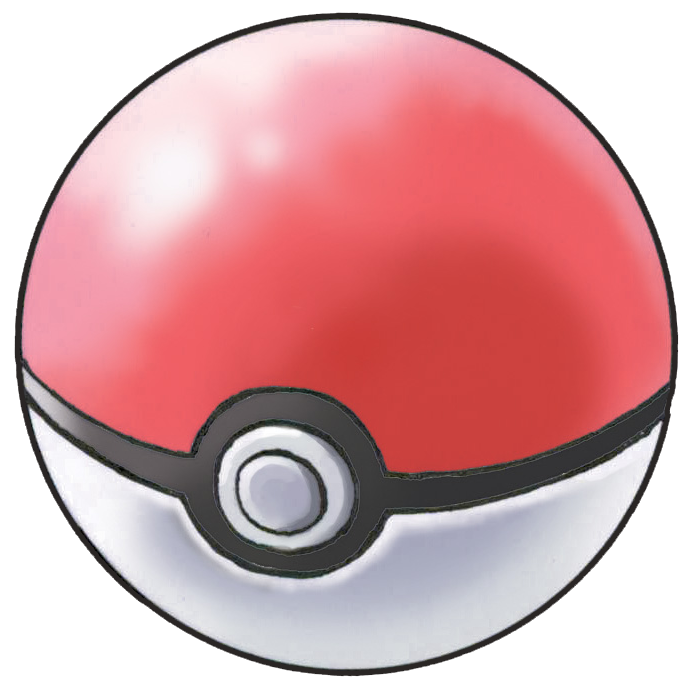
|
File:BallPokéstatus.png Poké Ball (モンスターボール Monster Ball) |
1× | None | $200 | ||
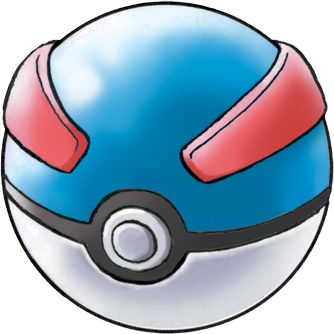
|
File:BallGreatstatus.png Great Ball (スーパーボール Super Ball) |
1.5× | None | $600 | ||
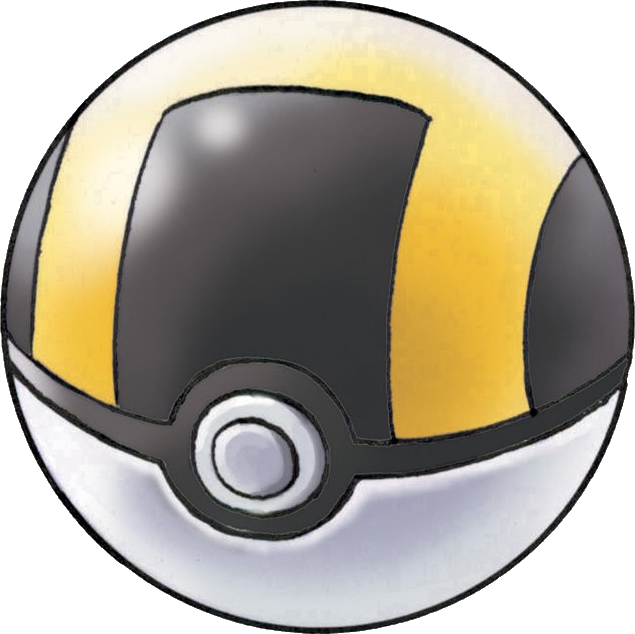
|
File:BallUltrastatus.png Ultra Ball (ハイパーボール Hyper Ball) |
2× | None | $1200 | ||
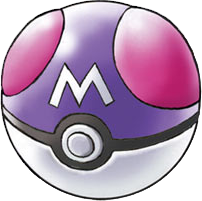
|
File:BallMasterstatus.png Master Ball (マスターボール Master Ball) |
255× | Guaranteed to catch any wild Pokémon1 | — | ||
| File:FanSaf.PNG | File:BallSafaristatus.png Safari Ball (サファリボール Safari Ball) |
1.5× | For use in the Safari Zone only | — | ||
|
| ||||||
These Poké Balls were first introduced in Generation I and have appeared in each game since, with the exception of the Safari Ball which did not appear in the second Generation of games.
The Poké Ball is considered the most basic and universal form of Ball. Nearly every Poké Mart carries it or one of its two upgrades, the Great Ball and Ultra Ball. The only known place where these three Balls are not plentiful is Orre, due to its lack of wild Pokémon. With the discovery of Poké Spots, however, they are becoming more commonly available in this region as well.
The Master Ball is the final and best upgrade of the Poké Ball, as well as the most rare. It was developed by Silph Co., but only a few were created before Team Rocket invaded and the project was discontinued. Master Balls are now given only to esteemed Pokémon researchers. Because of this, only one can be found normally in each game (though it can be won in all other generations after the first; it is the grand prize for the Lucky Number show, Lilycove City's Lottery, and at Jubilife TV). It could be sold for $0 in Generations I and II, but in later Generations the Poké Marts would refuse it.
The Safari Ball is the only one of the original Poké Ball forms that is not considered one of the basic Poké Ball types. When playing a game in the Safari Zone, thirty of these will be provided to capture Pokémon with. If the game ends before all thirty are used, the remainder are returned when leaving the Safari Zone. It is as strong as a Great Ball, but catching Pokémon is often more difficult with it due to the fact that there are no formal battles with Pokémon in the Safari Zone.
Super Smash Bros. Series
Normal Poké Balls are also an item in the Super Smash Bros. series. When thrown, on top of doing a small amount of damage to any opposing character they may hit, they release a randomly selected Pokémon.
Super Smash Bros. Melee Trophy information
These balls are used to capture and contain wild Pokémon. Most Pokémon must be weakened in some way before they can be captured, but once they're inside a Poké Ball, they enjoy their new home, since Poké Balls contain an environment specially designed for Pokémon comfort. Master Balls are the strongest type.
In the anime
Beyond any doubt, the original Poké Ball is the most commonly used type of Ball in the anime. The vast majority of Pokémon are stored in regular Poké Balls, to the point that large collections of Poké Balls can be seen with no variations among them. Even Ash's Pikachu, which spends all of its time out of its Poké Ball, is shown to have a regular Poké Ball with a little lightning bolt drawn on it in Pokémon - I Choose You!. On the other hand, the Great Ball and Ultra Ball upgrades are very rare or even non-existent.
A Master Ball has been seen in Whiscash and Ash. It was used by Sullivan in his attempt to capture a Whiscash. However, despite the fact that the Master Ball cannot be escaped from, he did not catch the Whiscash; instead, the Pokémon swallowed it whole and escaped back into the water. However, much time prior, a Master Ball sort of appeared, albeit as a beach ball in Beauty and the Beach, and after in A Hot Water Battle.
Safari Balls were seen in EP035. In this episode, Ash received thirty with which he could capture Safari Zone Pokémon. However, despite his best efforts to catch other Pokémon, he ended up using all thirty to capture a herd of Tauros. They appeared in Safari Balls in Showdown at the Po-Ké Corral; however, in all subsequent airings they have been in regular Poké Balls.
Occasionally, an item will be caught instead of a Pokémon, such as a rice ball or something else that would be smaller than the Poké Ball. The greatest example, if not the only, is when Ash tried catching Mankey in Primeape Goes Bananas. These, however, are just jokes. For example, in a commercial for Kids' WB!, Ash caught a talking sock singing that Ash couldn't catch him.
If a Poké Ball is used to try to capture a human, the human will get shocked with electricity instead of being captured.
Named in Journey to the Starting Line, the Poké Ball a Pokémon is temporarily held in before being given to beginning Pokémon Trainers is called a "starter Poké Ball". In the anime only, a Pokémon is held in one of these temporary containments which do not 'mark' the Pokémon, so it can then be assigned to one of the six regular Poké Balls given to the trainer. Starter Poké Balls look identical to regular Poké Balls, but are occasionally marked with some form of identification, such as a lightning-bolt or writing, such as the one which held Ash's Pikachu. In the games, however, the player is simply given 5 Poké Balls plus the Pokémon, already assigned a ball.
Generation II Poké Balls
In the games
| Image | Name | Apricorn | Catch rate | Notes | ||
|---|---|---|---|---|---|---|
| File:Park Ball-Johto.png | Park Ball (パークボール Park Ball) |
- | 1.5× | For use in the National Park Bug-Catching Contest only | ||
| File:Level Ball.png | Level Ball (レベルボール Level Ball) |
Red | Varies | Catch rate if the player's current Pokémon's level is:
| ||
| File:Lure Ball.png | Lure Ball (ルアーボール Lure Ball) |
Blu | 3× | Wild Pokémon must be hooked by a Fishing rod | ||
| File:Moon Ball.png | Moon Ball (ムーンボール Moon Ball) |
Ylw | 4× | Only if the wild Pokémon evolves with a Moon Stone | ||
| File:Friend Ball.png | Friend Ball (フレンドボール Friend Ball) |
Grn | 1× | The wild Pokémon has a happiness value of 200 after being caught | ||
| File:Fast Ball.png | Fast Ball (スピードボール Speed Ball) |
Wht | 4× | If the wild Pokémon is one that flees from battles2 | ||
| File:Heavy Ball.png | Heavy Ball (ヘビーボール Heavy Ball) |
Blk | Varies | Catch rate if the wild Pokémon is:
| ||
| File:Love Ball.png | Love Ball (ラブラブボール Love Love Ball) |
Pnk | 8× | If the player's current Pokémon and the wild Pokémon have opposite genders | ||
|
| ||||||
The Park Ball is much like the Safari Ball absent in the Generation II games, including being equal to a Great Ball in strength. It is used in the National Park during their Bug-Catching Contest. Twenty Park Balls are provided for this, and the Pokémon can be battled before they are captured. However, while all twenty balls can be used and catch Pokémon before the contest ends, only one Pokémon can be kept for the contest judging.
Most of the Poké Balls available in Generation II, however, are the custom Poké Balls crafted by Kurt. This Poké Ball expert can be found in Azalea Town, and once per day he will craft an Apricorn into a special Poké Ball based on its color. Because of the much larger variety of Poké Balls available, Generation II was the first generation to introduce a bag with a separate pocket for Poké Balls.
In the anime
In The Bug Stops Here, Ash and Casey compete in the Bug-Catching Contest and use Park Balls to capture Bug Pokémon. Ash wins the contest with a Beedrill, but gives it to Casey instead.
The custom Apricorn Poké Balls were seen and used a few times during the anime. In Going Apricorn!, Ash, Misty, and Brock receive Fast Balls from Kurt, and by the end of the episode Brock uses his to capture a Pineco. By the end of the next episode, Gettin' The Bugs Out, Ash and Misty receive Lure Balls, and Brock receives a Heavy Ball. In The Totodile Duel, both Ash and Misty tried to capture a Totodile with their Lure Balls, with Ash succeeding. Later, in A Corsola Caper!, Misty got a second chance to use her Lure Ball, capturing a Corsola with it. The other two Fast Balls and the Heavy Ball were not seen or mentioned again, but a different Heavy Ball was used in Gulpin It Down! to capture a giant Gulpin.
In Pokémon Special
Both Gold and Silver received a Friend Ball and Heavy Ball, respectively. Kurt says that the Poké Balls would work only where its life energy is most concentrated.
Generation III Poké Balls
In the games
| Artwork | Name | Catch rate | Effects | Price | ||||||
|---|---|---|---|---|---|---|---|---|---|---|
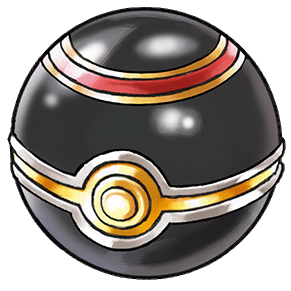
|
File:BallLuxurystatus.png Luxury Ball (ゴージャスボール Gorgeous Ball) |
1× | The Pokémon caught will become closer to their trainer quicker. | $1000 DPPt | ||||||
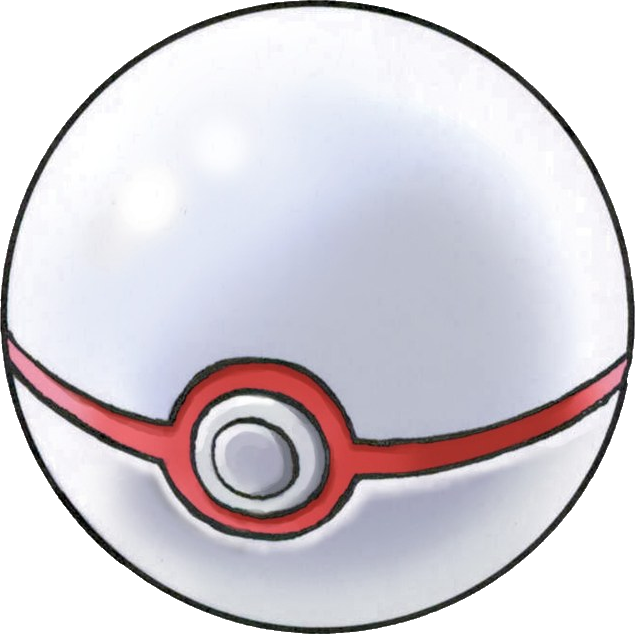
|
File:BallPremierstatus.png Premier Ball (プレミアボール Premier Ball) |
1× | Given after purchasing 10 or more normal Poké Balls | — | ||||||
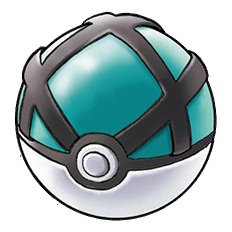
|
File:BallNetstatus.png Net Ball (ネットボール Net Ball) |
Varies | Catch rate if used on:
|
$1000 | ||||||

|
File:BallDivestatus.png Dive Ball (ダイブボール Dive Ball) |
Varies | Catch rate if used on: | $1000 | ||||||
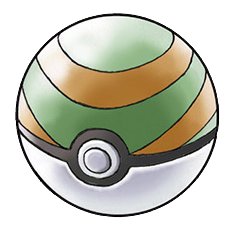
|
File:BallNeststatus.png Nest Ball (ネストボール Nest Ball) |
Varies | Catch rate if the wild Pokémon is:
|
$1000 | ||||||
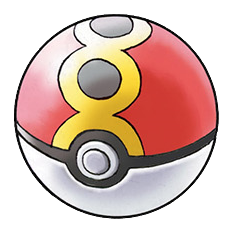
|
File:BallRepeatstatus.png Repeat Ball (リピートボール Repeat Ball) |
Varies | Catch rate if used on:
|
$1000 | ||||||
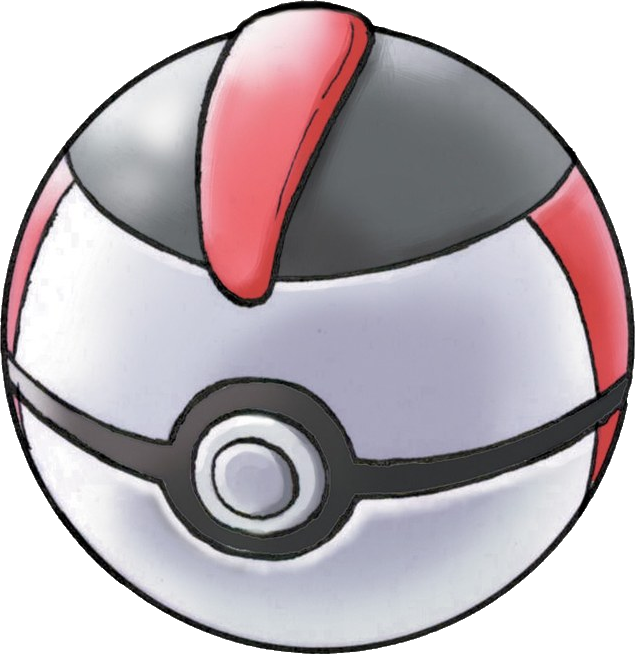
|
File:BallTimerstatus.png Timer Ball (タイマーボール Timer Ball) |
Varies | Catch rate if the number of turns that have passed is:
|
$1000 | ||||||
All of the third generation Poké Balls were developed by the Devon Corporation.
In this generation, the type of Ball used to capture a Pokémon was kept track of by the game itself, so that when Trainers sent out their Pokémon, the type of effect could vary. In this way, two Balls with the same effectiveness, such as the Safari Ball and Great Ball, or Poké Ball and Premier Ball, would differ.
In Generation III, the Luxury Ball is rare, second only to the Master Ball; however, it is available for normal purchase in Generation IV. One can be found on the Abandoned Ship, and others can be obtained from winning Pokémon Contests. It is also given in FireRed and LeafGreen by Lady Selphy for showing her the Pokémon she asks for. Taking advantage of being able to track what kind of Ball a Pokémon is in, rather than applying a flat happiness bonus like the Friend Ball did, it heightens the rate at which the Happiness of the Pokémon captured with it increases.
The Premier Ball is given with every purchase of ten or more Poké Balls in Hoenn, Orre, and Sinnoh Poké Marts. However, it is not different from regular Poké Balls in any manner except appearance.
The Net Ball and Dive Ball can only be purchased at the Poké Mart in Mossdeep City. This is likely due to the city's high affiliation with the Template:Type2. It can also be obtained from the Fishing Guru's younger brother in Silence Bridge after showing him a Magikarp.
The Nest Ball can only be purchased at the Poké Mart in Verdanturf Town.
The Repeat Ball and Timer Ball can be purchased in Rustboro City after going through Rusturf Tunnel from Verdanturf Town for the first time, or from Two Island Market Stall after saving Lostelle, beating the Elite Four, buying every item in the stall at least once and then leaving and returning to the area.
All Poké Balls released in Generation I are available as well.
In the anime
The Luxury Ball and the Repeat Ball made a short cameo appearance in the beginning of Jirachi: Wish Maker, containing Brendan's Aggron and Shiftry.
Generation IV Poké Balls
In the games
Five new Poké Balls were introduced in the Generation IV games.
| Artwork | Name | Catch rate | Notes | Price | ||||||
|---|---|---|---|---|---|---|---|---|---|---|

|
File:BallHealstatus.png Heal Ball (ヒールボール Heal Ball) |
1× | Fully heals a captured Pokémon | $300 | ||||||

|
File:BallDuskstatus.png Dusk Ball (ダークボール Dark Ball) |
4× | Catch rate only applies if used within a dark area or during the night; otherwise it's 1× | $1,000 | ||||||

|
File:BallCherishstatus.png Cherish Ball (プレジャスボール Precious Ball) |
1× | Used to contain Pokémon given out in events | — | ||||||
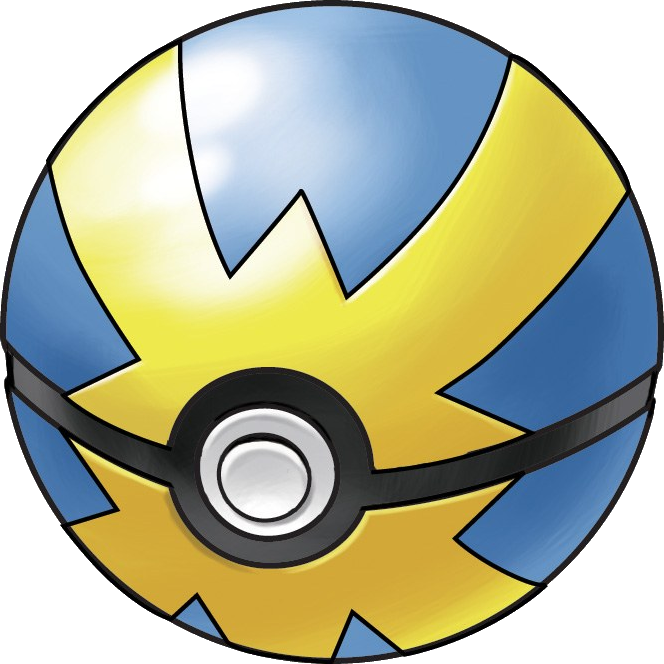
|
File:BallQuickstatus.png Quick Ball (クイックボール Quick Ball) |
4× | For every 5 turns in battle, the catch rate decreases by 1×, reaching a minimum of 1× | $1,000 | ||||||
| File:BallPalParkstatus.png Park Ball (パークボール Park Ball) |
— | Used at the Pal Park only | — | |||||||
All of the Generation I and Generation III Poké Balls are also available, though the Dive Ball can only be obtained randomly through the man in Solaceon Town upon showing him the Pokémon he asks for, or transferred ahead held by a Pokémon via Pal Park. This is due to a lack of use for it in Sinnoh. The Park Ball is colored gold and silver, with a light blue center, and is a temporary containment used for show. It is the only Poké Ball (aside from the Snag Ball) with the ability to override another Poké Ball's "mark" on a Pokémon. After capture, the Pokémon is put into the Poké Ball it was captured in. Whether the Park Ball would work on a regular wild Pokémon not already captured is not known.
Cherish Balls cannot be acquired for use without cheating; instead, they contain Pokémon distributed at events.
Luxury Balls function differently in this generation: they can be bought, and the factor the happiness is increased by varies with the event. For details, see this page.
In the manga
In the Pokémon Special manga, one can see the miniature of the Pokémon inside the Poké Ball; the type of ball doesn't matter. Already captured Pokémon can be re-captured, as shown when Red re-catches Misty's Gyarados.
In the Electric Tale of Pikachu manga, however, the center of a Poké Ball has a small number to differentiate it from others. In one chapter of this series, Ash suggests to have a large Poké Ball built as a trap to capture a giant Haunter (Black Fog). The plan succeeded, but Haunter used Explosion from inside, destroying the trap in the process.
Other Poké Balls
These Poké Balls are found outside of the standard games. They are often too unusual to fit in with other groups of Poké Balls, and some are so unusual that it is questionable if they even qualify as Poké Balls. Most of these have separate articles, which describe their unique properties in greater detail.
In the games
- Pester Balls
- Seen in Pokémon Snap, this unusual Poké Ball cannot catch Pokémon. Instead, it releases an irritating gas.
- GS Ball
- Seen in Pokémon Crystal, this Poké Ball cannot catch Pokémon. Instead, it is a special item that can be used to make Celebi appear in the Ilex Forest.
- Snag Balls
- Though not a Poké Ball in its own right, this is seen in Pokémon Colosseum and Pokémon XD. It is a ball that has been modified using the Snag Machine. It is capable of snagging a captured Pokémon during a Pokémon battle as if it were wild.
In the anime
- Pre-Poké Ball Objects
- There are multiple artifacts and antiques which have similar properties to modern Poké Balls but are not technically the same thing - some, in fact, are not even balls. These range from unusual artifacts found in the ancient city of Pokémopolis which contain Giant Pokémon inside (seen in The Ancient Puzzle of Pokémopolis) to antique Poké Balls which look similar to their modern-day equivalents but have an altered design and are made from a more fragile material (seen in Just Waiting On a Friend). Given that these were made before the development of the technology used in modern Poké Balls, the workings behind these objects are a mystery. Another early Poké Ball design is seen in Pokémon 4Ever when Sammy uses a Poké Ball brought from his own time with a lock on its button to call out his Charmeleon. This model seems to be much closer to the modern design. Hollowed-out Apricorn berries, much like Kurt's custom Poké Balls, may also have been used in the past to hold Pokémon.
- Green Poké Balls
- Official name unknown. In Pokémon - I Choose You!, in the Pokémon League battle seen at the very start of the episode, one Trainer, presumably Bruno, throws out a green Poké Ball which contains an Onix. This was the first Poké Ball seen in the anime. No details on this Poké Ball were given, and its color has never been explained; shortly after in the episode, regular red Poké Balls are used.
- It is possibly supposed to be some special sort of Poké Ball, like a Great Ball or Ultra Ball, to help show the elite status of the Trainers battling. Additionally, since some Generation II information was known at this point, it could be an early assumption of one of the apricorn balls. If this were the case, then it would be most likely a Friend Ball. It's also very similar to a Safari Ball anime design, except it doesn't have an "S" letter. It is interesting to note that in the Ruby/Sapphire artwork of Brendan, he is shown with a Green Poké Ball. The reason for this is unknown.
- It may also very simply be a Poké Ball painted green, or a customized Poké Ball colored green to make it easier for its Trainer to identify, or maybe even a regular Poké Ball colored differently because of the lighting.
- Solid Gold Poké Balls
- There are not actually any solid gold Poké Balls in the Pokémon world. However, the idea is often used to fool greedy criminals like Brodie in The Ribbon Cup Caper or gullible consumers like James in Battle Aboard the St. Anne.
- Mewtwo's Poké Balls/Clone Balls
- Marked by an eerie eye incorporated into their design, these Poké Balls were created and used by Mewtwo in Mewtwo Strikes Back. They can be moved around easily with Mewtwo's Psychic powers, and they can capture any Pokémon, including those which have already been captured by a Trainer, and Pokémon which are already inside their Poké Balls. Mewtwo used these to gather Pokémon to be cloned. Mewtwo's Poké Balls do not make the same sound as regular Poké Balls when they open, but otherwise their function is the same. Some Pokémon fans on the Internet refer to them as Shadow Balls, but this is misleading because this type of Poké Ball has nothing to do with Shadow Pokémon; Shadow Ball is also the name of a Ghost-type Pokémon move first seen in the same movie.
- GS Ball
- This was in the possession of Professor Ivy, who gave it to Ash, who in turn gave it to Kurt to study. Despite this, its purpose is completely unknown, since it was never mentioned again after being given to Kurt, and has most likely been forgotten. There is a large amount of fan speculation as to what purpose it holds. It bears a striking resemblance with the Park Ball (seen above).
- Lake Balls
- These balls were used only in the Seaking Catching Competition, similar to the Park Balls used in the Bug-Catching Contest. They only appeared in Hook, Line, and Stinker, and have not been seen since. They appear as blue and white Poké Balls, with a fish pattern around the edge, and a yellow arrow on the top and bottom of the ball.
- Dark Balls
- These were used by The Iron Masked Marauder in Pokémon 4Ever. Presumably technology of Team Rocket, these Poké Balls will take over the mind of any Pokémon caught by them, making them turn into mindless servants of whoever caught them, as well as raise them to the highest level. These were used to capture multiple Pokémon, including Celebi. The Poké Balls were quite powerful in the movie as one of them were used to catch a Tyranitar without any problem.
- Crystal Poké Balls
- These were created by the Unown for Molly to battle with during Spell of the Unown.
- Rocket Poké Balls
- These were used in Mewtwo Returns, and look like normal Poké Balls but black with a red "R" on them. Hundreds were used by the many Rockets in the special.
- Chansey Poké Balls
- Used by a Nurse Joy in Showdown at Dark City.
- Other Poké Balls
- In Pokémon - I Choose You!, Pikachu's Poké Ball has a small lightning bolt mark on the top half of the ball, presumably added by Professor Oak to differentiate it from the Pokémon he would usually hand out as starters.
- Ritchie's Poké Balls bear a star-shaped sticker on the top half, so that he knows which ones are his if needed.
- Other uses of Poké Balls in the anime
- When Ash and Gary break a rusty, old Poké Ball they fished out of a pond, they each keep a piece as a symbol of their rivalry.
- Poké Balls are used in several places to symbolize Pokémon; for example, the Battle Frontier logo, either three entwined Poké Balls, or alternatively, half a stylized Poké Ball, as seen on Ash's Advanced Generation series and Diamond & Pearl series caps.
- A Poké Ball design marks the floor of most Pokémon Centers. Sometimes the roofs are also designed to look like a Poké Ball.
- The first Pokédex entry given in the anime was for the Poké Ball: "While being trained, a Pokémon usually stays inside its Poké Ball. However, there are many exceptions. Some Pokémon hate being confined. To capture a Pokémon, you usually have your own Pokémon battle with the other."
In the TCG
- Dual Ball
- This ball is found in Expedition Base Set, EX Team Magma vs Team Aqua, EX Delta Species, and EX Crystal Guardians.
- Team Aqua Ball
- This ball is found in EX Team Magma vs Team Aqua.
- Team Magma Ball
- This ball is found in EX Team Magma vs Team Aqua.
- Rocket's Poké Ball
- This ball is found in EX Team Rocket Returns.
- Also, on the card Lt. Surge's Secret Plan, Lt. Surge is seen holding a Master Ball. The significance of this is unknown.
Trivia
- In the games, all opponents keep their Pokémon in Poké Balls, as opposed to the many other kinds of Balls. The reason for this is unknown. In the anime, the same is usually said to be true, but occassionally other special Poké Balls are used, (such as Brendan's cameo, and Ash and Misty using their Lure Balls.)
- In the handheld games, items are found in what appear to be normal Poké Balls; however, the console games choose to use large Poké Ball shaped chests for this purpose.
- Some Generation III Poké Balls are similar in function to some Generation II Poké Balls: Nest Ball is better for catching low-level Pokémon like the Level Ball, the Dive Ball is good for catching Pokémon found on the water like the Lure Ball, and the Luxury Ball raises happiness quicker like the Friend Ball.
- No-one is certain as to which kind of Poké Balls Kurt will hollow from Apricorns, if he even does, in the Generation II remakes Pokémon HeartGold and SoulSilver. However, for compatibility reasons with Pokémon Diamond, Pearl and Platinum, he will either give out Generation III Poké Balls or nothing at all.
- In Super Mario Galaxy, there is a galaxy named Buoy Base Galaxy which has a big sphere above it that looks very similar to a Poké Ball. It even has a button in the middle of it.
| Types of items | |
|---|---|
| General | Evolution stones • Fossils • Flutes • Shards • Held items Evolution items • Escape items • Exchangeable items • Valuable items Battle items • Scents • Nectars • Candy • Ingredients |
| Medicine | Status condition healing items • Vitamins • Feathers Mints • Mochi • Drinks • Herbal medicine |
| Berry and Apricorn | Poké Balls • Apricorns • Berries • Mulch |
| Aesthetic | Decorations • Accessories (Normal • Great • Ultra • Master) Backdrops • Props • Décor Clothing (XY • SMUSUM • LGPE • SwSh • BDSP • LA • SV) |
| Other | Mail • Key Items • Event items Wonder Launcher items • Rotom Powers |

|
This item article is part of Project ItemDex, a Bulbapedia project that aims to write comprehensive articles on all items. |
